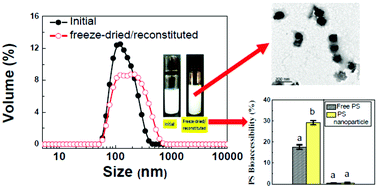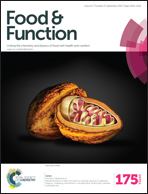Food protein-based phytosterol nanoparticles: fabrication and characterization
Abstract
The development of food-grade (nano)particles as a delivery system for poorly water soluble bioactives has recently attracted increasing attention. This work is an attempt to fabricate food protein-based nanoparticles as delivery systems for improving the water dispersion and bioaccessibility of phytosterols (PS) by an emulsification–evaporation method. The fabricated PS nanoparticles were characterized in terms of particle size, encapsulation efficiency (EE%) and loading amount (LA), and ξ-potential. Among all the test proteins, including soy protein isolate (SPI), whey protein concentrate (WPC) and sodium caseinate (SC), SC was confirmed to be the most suitable protein for the PS nano-formulation. Besides the type of protein, the particle size, EE% and LA of PS in the nanoparticles varied with the applied protein concentration in the aqueous phase and organic volume fraction. The freeze-dried PS nanoparticles with SC exhibited good water re-dispersion behavior and low crystallinity of PS. The LA of PS in the nanoparticles decreased upon storage, especially at high temperatures (e.g., >25 °C). The PS in the fabricated nanoparticles exhibited much better bioaccessibility than free PS. The findings would be of relevance for the fabrication of food-grade colloidal phytosterols, with great potential to be applied in functional food formulations.


 Please wait while we load your content...
Please wait while we load your content...